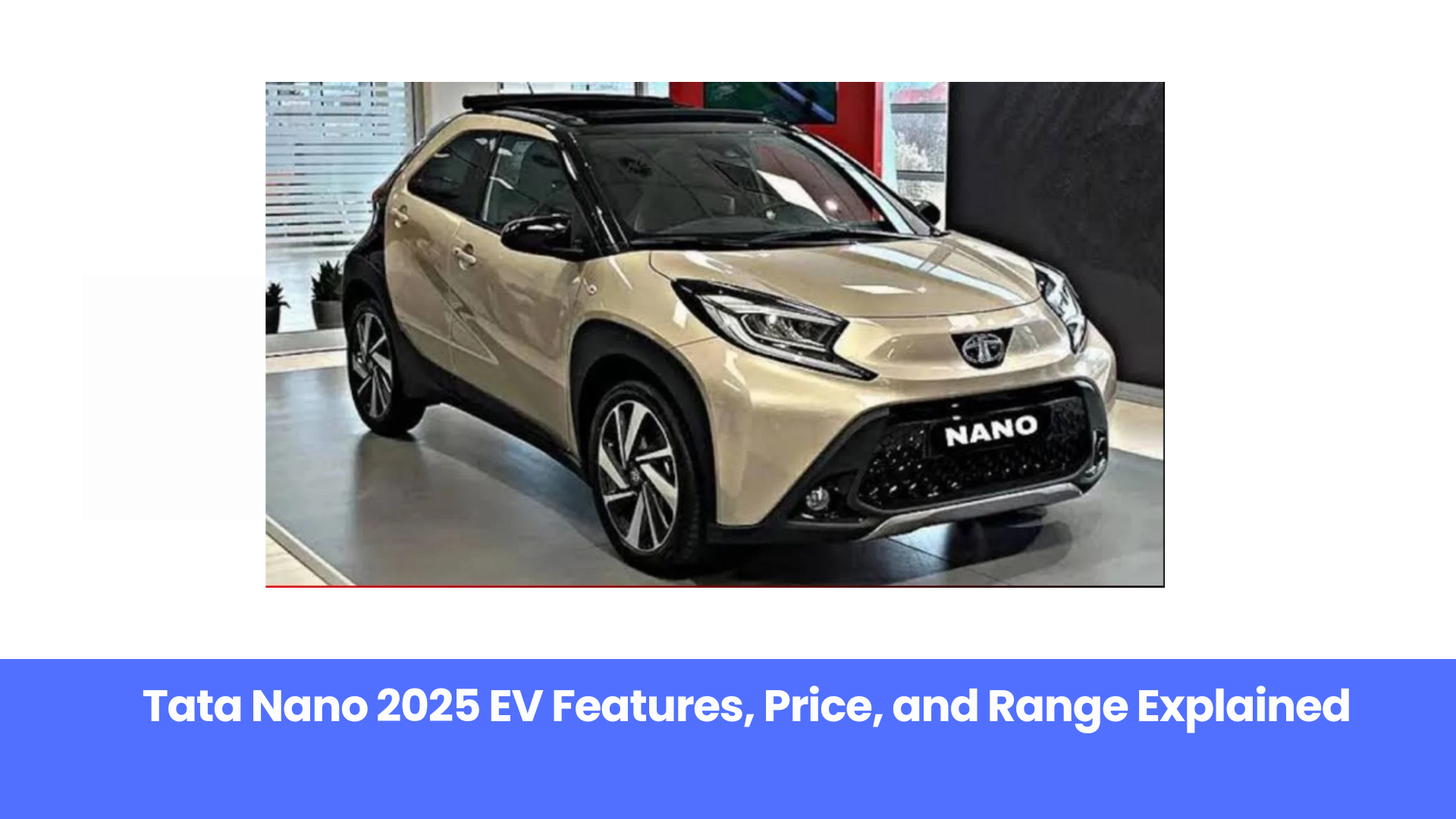Ratan Tata’s iconic Nano is back in a completely new avatar for 2025. This time, it comes as an electric car aimed at modern Indian city users. The Tata Nano 2025 promises style, efficiency, and affordability, targeting first-time car buyers and those looking for sustainable mobility.
Exterior Design: Modern and Compact
The Nano 2025 keeps its small, city-friendly shape but gets a complete design refresh. The front has a closed grille, blue accents for the EV look, and sharp LED lights. Sleek 14-inch alloy wheels, a clean rear with LED strip lights, and aerodynamic bumpers make it stylish yet efficient. The design is compact for easy city parking but modern enough to turn heads.
Interior and Comfort: Small Yet Smart
Inside, the Nano EV feels premium. The cabin has soft-touch materials, dual-tone colors, and ambient lighting. A floating touchscreen supports Android Auto and Apple CarPlay, while the digital instrument cluster shows battery, range, and power usage. Seating is optimized for four adults, and rear seats can fold for extra boot space. Tata’s connected car tech lets users control AC, lights, and locks through a mobile app.
Technology and Innovation
The Nano EV uses Tata’s advanced EV platform with Ziptron technology. It has multiple driving modes — Eco, City, Sport — for efficiency and performance. Regenerative braking recovers energy during stops, while OTA updates ensure software stays current. Voice control, reverse camera, and auto climate enhance convenience.
Battery, Motor, and Performance
The car has a 35 kW (47 hp) motor with 110 Nm torque, reaching 0–60 km/h in under 6 seconds. Two battery options: 19 kWh (range 240 km) and 24 kWh (range 300 km). Fast charging takes 45 minutes to 80%, while home AC charging takes 6–8 hours. The battery is IP67-rated for water and dust resistance.
Safety and Build Quality
The Nano 2025 focuses on safety with a strong steel frame, dual airbags, ABS with EBD, ESC, ISOFIX mounts, rear sensors, and a camera. It aims for at least a 4-star Global NCAP rating, addressing past safety criticisms.
Range, Mileage, and Charging
With an electric range of up to 300 km, the Nano EV is ideal for city and short trips. Regenerative braking and optimized energy management maximize efficiency in heavy traffic. Tata’s EV charging network across India ensures convenient recharging.
Price and Variants
Tata Motors aims to make Nano the most affordable EV in India:
- Nano EV Standard 19 kWh – ₹4.99–5.49 lakh
- Nano EV Long Range 24 kWh – ₹5.99–6.49 lakh
State incentives and FAME-II subsidies could reduce on-road prices further. Easy finance and low EMI options will make ownership accessible.
Launch Date and Availability
The Tata Nano 2025 EV is expected in Q3 2025, with bookings by mid-year. Initial rollout in major cities like Mumbai, Delhi, Bengaluru, and Chennai, followed by nationwide availability. An 8-year/1.6 lakh km battery warranty ensures peace of mind.
Conclusion
The Tata Nano 2025 EV is a new era for India’s city cars — small, green, smart, and affordable. With modern design, advanced tech, and competitive pricing, it could replicate the success of the original Nano, making electric mobility accessible to millions.
FAQs
What is the expected range of Tata Nano 2025 EV?
The standard 19 kWh battery offers around 240 km, while the 24 kWh long-range battery can go up to 300 km on a single charge.
How fast can the Nano EV charge?
Using a fast charger, it can charge from 10% to 80% in about 45 minutes. Home AC charging takes 6–8 hours for a full charge.
Will the Nano 2025 be safe?
Yes, it comes with dual airbags, ABS, ESC, ISOFIX mounts, rear sensors, and a high-strength steel frame. It aims for a 4-star Global NCAP rating.
What is the expected price of Tata Nano 2025?
The standard variant is expected at ₹4.99–5.49 lakh, and the long-range variant at ₹5.99–6.49 lakh. FAME-II and state incentives may reduce the price further.
When will Tata Nano 2025 be available?
Launch is expected in Q3 2025, with bookings likely to open by mid-year. Initial availability will be in metro cities, followed by a gradual rollout across India.

